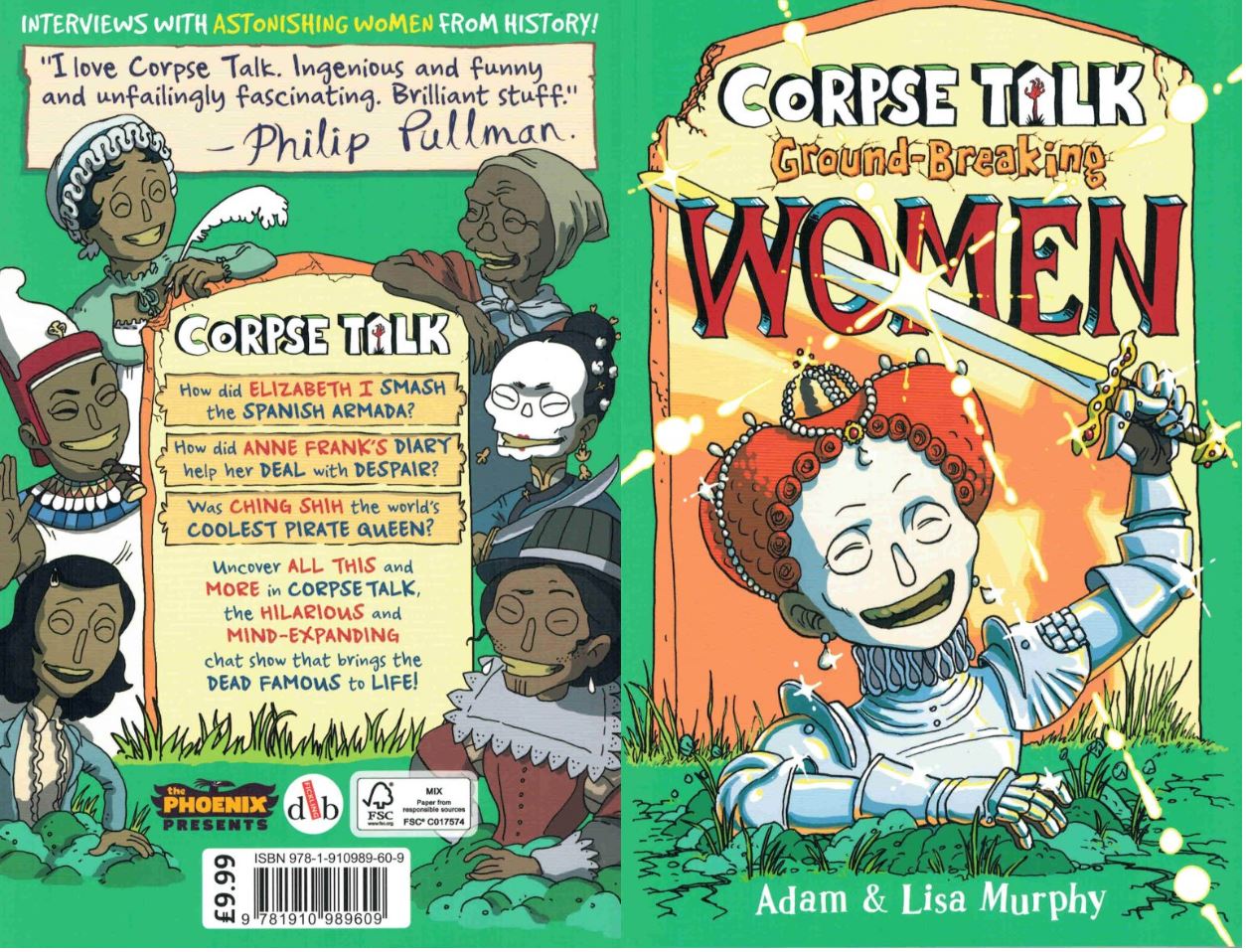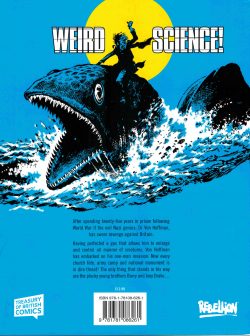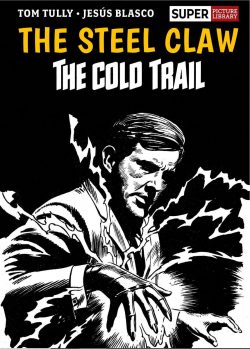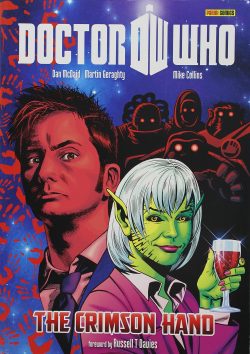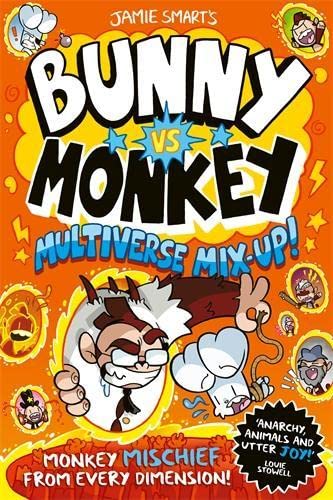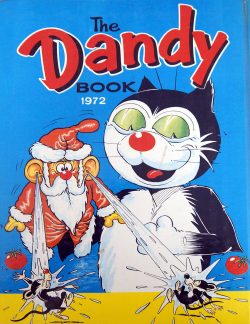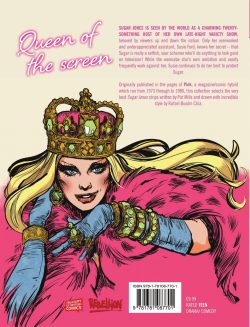

By Pat Mills, Rafael Busóm Clùa & various (Rebellion Studios)
ISBN: 978-1-78108-770-1 (TPB/Digital edition)
At first glance British comics prior to the advent of 2000 AD fall into fairly ironclad categories. Back then, you had cosily fantastic preschool whimsy, a large selection of adapted TV and media properties, action, adventure, war and comedy strands, with the occasional dash of mild supernatural horror. Closer scrutiny would confirm a persistent subversive undertone, especially in such antihero series as Dennis the Menace and The Spider, or simply quirky fare like Marney the Fox or His Sporting Lordship.
British comics have always been able to tell big stories in satisfyingly moreish small instalments. Coupled with superior creators and the anthological nature of our publications, this has ensured hundreds of memorable characters and series have seared themselves into the little boy’s psyche inside most adult males. I gather that’s equally true of the stuff girls were reading at the time…
Like most of my comics contemporaries I harbour a secret shame. Growing up, I was well aware of the weeklies produced for girls, but would never admit to willingly reading them. My loss: I now know that they were packed with amazing strips by astounding artists and writers, many of whom were (sadly anonymous) favourites who also drafted sagas of stalwart soldiers, marauding monsters, evil aliens or weird wonders …because all British superheroes were bizarrely off-kilter.
I now know that – in terms of quality and respect for the readership’s intelligence, experience and development – girls’ comics were far more in tune with the sensibilities of their target audience, and I wish I’d paid more broad-minded attention back then. Thus, I’m delighted to share here another peek at superb and oddly sophisticated comics from a publication I never went near, even though it was just as groundbreaking as its later stablemates Action or 2000AD – albeit not as nostalgically revered or referenced nowadays…
Girl’s Juvenile Periodicals always addressed modern social ills and issues, and also embraced those things women needed to be indoctrinated in: Fashion, pop trends, pets, toys, style-consumerism, make-up and more (even cooking, general knowledge and sewing!).
Pink came out of IPC’s girl’s publications division in 1973 and was quite successful before finally merging with Mates in 1980, just as television and teen fashion mags finally supplanted the mix of comics stories and trend journalism foe female audiences. Those girls’ grandkids are now lost in social media and the world turns ever on…
During its mercurial run of 377 issues, Pink offered targeted “news” features, games, puzzles, competitions and a wealth of strip mystery, adventure and particularly romantic fare in serials like Don’t Let him Fool You, Faye!, The Haunting of Jilly Johnson, The Island of Stones, Shadows of Fear, Memories of Mike, Rich Girl, Poor Girl, The Sea People and Remember, Rosanna, Remember!
As years rolled by, it was clear that the editors were gradually shifting the demographic, targeting older teens by developing a saucy, cheeky persona in keeping with a readership getting ready for adult life. One of those editors was Pat Mills – arguably the greatest creative force in British comics.
He began his career at DC Thomson in Dundee, scripting and editing for teen romance title Romeo and others before going freelance. At this time Mills wrote girls comics and humour strips, and moved south to London to join IPC and do the same for them. After editing and writing for Tammy, Pink and Sandy – and starting a small evolution in content and style on Jinty – he moved on and killed posh-comics-for-middle-class-boys (and girls) stone-dead.
After creating Battle Picture Weekly (1975, with John Wagner & Gerry Finley-Day), as well as Action (1976) and 2000AD (1977), Mills launched Misty and Starlord (both 1978). Along the way, he also figured large in junior horror comic Chiller…
As a writer he’s responsible for Ro-Busters, ABC Warriors, Nemesis the Warlock, Slaine, Button Man, Metalzoic, Marshal Law and Requiem Vampire Knight among so many, many others. That especially includes Battle’s extraordinary Charley’s War (with brilliant Joe Colquhoun): the best war strip of all time and one of the top five explorations of the First World War in any artistic medium.
Unable to hide the passions that drive him, Mill’s most controversial work is probably Third World War which he created for bravely experimental comics magazine Crisis. This fiercely socially conscious strip blended his trademark bleak, black humour, violence and anti-authoritarianism with a furious assault on Capitalism, Imperialism and Globalisation. It contained elements of myth, mysticism, religion and neo-paganism – also key elements in his mature work. You should also see his run on Doctor Who Weekly and Serial Killer – his final collaboration with Kev O’Neill…
Mills has always kept a judgemental eye on the now and recognised the power of humour and satire. In 1974 that led to his debuting a new kind of star for Pink. In 1973, the much-maligned and deliberately misunderstood (we call it “gaslighting” these days) “Sexual Revolution” hit a media high.
It was an epoch of “cheesecake” and “girly” strips: a genre stuffy old-fashioned Britain used to excel at and happily venerate. Saucy postcards, Carry-On films, ingenuously innocent smut and a passion for double entendre had for decades obscured and obfuscated genuine concerns like institutionalised gender pay-gaps, unwarranted interest in and control of female reproductive rights and sexual behaviour. There were double standards for men and women’s work and recreational behaviours, and that incomprehensible Mystery of Mysteries: just why men are utterly certain that anything they see automatically fancies them back and is therefore fair game for creepy jollity and unwanted attentions excused as “just having bit of fun” or “paying a compliment”…
After years of feminist agitation and balanced by entrenched institutional male mockery, countless publications and TV shows suddenly boiled at a wave of unexpected militancy. Everywhere women were demanding equal rights, equal pay and fair treatment …and isn’t it simply marvellous that they’ve got all those things now?..
Contraception was becoming more readily – if not quite universally – available and apparently everywhere bras were burning. This meant men actually coming to believe that sex might be less expensive and perhaps even repercussion/responsibility free. It was a reactionary Male Chauvinist Pig’s Dream, and unrepentant, old-school stand-up comedians had a field day. The only changes I can recall were more skin on TV, a wave of female-starring comics strips like Amanda, Scarth, Danielle, Axa and Wicked Wanda (in which each of the titular heroes lost her clothes on a daily basis) and the rise of “Page 3” newspaper nudies…
I’m not sure how many editors of daily and Sunday papers were supporters of the Women’s Liberation movement, or whether they simply found a great excuse to turn the industry’s long tradition of beautifully rendered naked birds on their pages into something at least nominally hip, political and contemporary.
I do know that an awful lot of new features appeared, with aggressive, strident (if not actually liberated), forceful women who nevertheless still had hunky take-charge boyfriends in tow…
In comics, Pat Mills created a rather greedy and generally nasty piece of work who – if not actually a villain – was certainly utterly selfish, shallow and self-absorbed. We Brits love rogues and scoundrels and will forgive them for almost anything – just look at the result of any election in the last 30 years
Thus Sugar Jones expertly capitalised on our national tradition of forgiving appallingly egregious actions and public weakness for inept wickedness: standing legs akimbo at the vanguard of a growing compulsion to slavishly follow what we now call “celebrity culture”. She too spent a lot of time in her underwear or less…
The series was illustrated by Spanish master of style Rafael Busóm Clùa who was a fixture of girls comics from the era. As well as The Island of Stones in Pink, he also limned The Three Wishes serial in Tammy, Two of a Kind in Misty and Warm Love in Oh Boy!
The Best of Sugar Jones features material seen in Pink from 16th October 1974 to 21st May 1977: episodic snippets that are all loving and lavish riffs on a single theme: cruel self-delusion.
Sugar is a beautiful, successful sexy thing. She has her popular TV variety show and knows everyone. She sings, dances, does chat and interviews, opens fetes and sponsors charities. The public all love her… or at least the heavily made-up, cynically manufactured image of the sweet 20-something “fabulous super sex symbol” she unceasingly pretends to be.
Sugar is actually in her 40s: an amalgamated masterpiece of the skills of make-up artists, and art of clothiers, camera technicians and trainers. The enable her to frantically cling on to the illusion of vivacious attainability. She wants everyone to want her, and only her dutiful but increasingly disenchanted and abused assistant Susie Ford knows the plain truth.
Every week Sugar goes through formulaic sitcom motions of another scheme to build the star’s ego, reputation, bank account or bedpost notch count, with Susie forced to assist or secretly sabotage the shameless plot.
It sounds pretty tedious and repetitive, but Mills’ deft scripts and manic plotting, so sublimely rendered by good girl artist Busóm Clùa, make these assorted cheesecake treats absolutely captivating to see. High on glamour, the strips would have made so many pubescent boys rethink their views on girls comics, but thankfully, nobody let us in on the secret…
Here you’ll see the never-long-defeated fame-&-acclaim chaser adopt a hunky jungle man; scupper the careers of up-&-coming rivals; seduce impresarios and showbiz bigwigs; fail to launch a respectable movie/pop/theatrical/dance career; lose many prospective rich husbands or simply sow utter chaos with new and unwise, unsanctioned publicity stunts.
Her plans always fail, but somehow the self-absorbed seductress never really pays for her misdeeds, except in secret shame and frustration. Always, she bounces back with a new notion…
Sugar’s not averse to using her assets to make an illicit buck either, but her financial skulduggery always leaves her poorer in pocket. Even if the oblivious masses can’t get enough of her, whenever she tries to exploit charities, or breaking political crises, Susie’s there to see no one is harmed or suffers hardship…
A wickedly barbed social fantasy and satire on fame, fortune and pride, Sugar Jones presents a truly unique, likably unlovable antihero who’s one step beyond normal role model fare – or even standard raunchy cheesecake classification: someone who also transcends the rather shocking core assumption of that era, which seems to be “women are worthless once they turn 21”…
Exploring fashion, branding, celebrity culture, and the toxic legacy of glamour – on male terms and in a playing field controlled by men – from a time when that “laddish” culture of “banter” and “cheekiness” was even seeping into girls comics and magazines, Sugar Jones affords a totally different view of a woman on top: one any student of sexual politics and legacy of the culture cannot afford to miss…
© 1974, 1975, 1976, 1977 & 2020 Rebellion Publishing IP Ltd. All rights reserved.


